|
||||||||||||||||||||||||||||||||||
To unsubscribe, click here
|
||||||||||||||||||||||||||||||||||
Sidney José Lima Ribeiro was born in Sao Paulo (Brazil) in 1959. In high school he signed up for a technical course in Chemistry in the seaside city of Santos. He later moved to Araraquara also in the state of São Paulo where he graduated with a bachelor`s (1982), master`s (1987) and then a doctorate degree (1992) in Chemistry at the University of the State of São Paulo Júlio de Mesquita Filho (UNESP). He began his teaching career in the Chemistry Institute – UNESP in 1986. From 2001 to 2003 he was the head of the General and Inorganic Chemistry Department. In 2008, he became a full professor. His postdoctoral fellowship was in France, at the École Centrale Paris (1994) and at the Centre National d’ Etudes des Telecomunications, CNET (1995).
Professor Sidney Ribeiro is a member of the editorial board of the Journal of Sol-Gel Science and Technology (Springer) and the Journal of Non-Crystalline Solids (Elsevier) and editor of the Eclectic Chemistry journal (Chemistry Institute of UNESP).
He is the author of over 300 peer reviewed articles published in international journals, 7 books or book chapters and 19 patent applications. His scientific production has approximately 5,000 citations. He has mentored or supervised a hundred research works, including doctoral theses, master`s dissertations, postdoctoral research and scientific initiation projects.
He was a visiting researcher at the National Institute for Research in Inorganic Materials (Japan) and visiting professor at the University of Trento (Italy), at the Universities of Angers and Toulouse (France), the University of Aveiro (Portugal) and the Federal University of Juiz de Fora (Brazil).
He has been a member of the São Paulo State Academy of Sciences since 2012 and full member of the Brazilian Academy of Sciences (ABC) since 2015.
Here is a brief interview with the researcher.
SBPMat newsletter: – Tell us what led you to become a scientist and work in the Materials area.
Sidney Ribeiro: – I am a chemist. I studied a technical Chemistry course at the Carmelite High School in Santos. Afterward, by now truly enjoying chemistry, I got my Bachelor`s Degree in Chemistry here in Araraquara. I graduated in 1982. I completed my Master`s in Spectroscopy of Lanthanide here at UNESP under the guidance of Professor Ana Maria G. Massabni which included a national doctoral “sandwich” program, with a part of the work done here in Araraquara and another part at the Federal University of Pernambuco under the guidance of Prof. Gilberto Sá. In my doctoral research I started to work in the interface between Chemistry – Physics – Materials Science, in which we participate until today. My post-doctoral research was at the École Centrale Paris and CNET France Telecom from 1994-95.
SBPMat newsletter: – In your opinion, what are your main contributions to the Materials area, considering all aspects of scientific activity?
Sidney Ribeiro: – We have worked with materials containing rare earth ions with applications in photonics and biomedicine. We have two very well-cited review papers that can serve as an example for those interested in learning more about our work:
1-Carlos, LD et al, Lanthanide-Containing light-emitting organic-inorganic hybrids: a bet on the future, Advanced Materials (2009) 21(5) 509-534.
2-Correia SFH et al, Luminescent solar concentrators: challenges for lanthanide-based organic-inorganic hybrid materials, J. of Materials Chemistry A (2014) 2 (16) 5580-5596.
Our postgraduate program is classified by Capes as level 7 (the highest) and our undergraduate courses are among the best in Latin America. This basic science work has resulted in the training of skilled labor (27 master’s degrees, 20 doctoral degrees and 23 postdoctoral supervisions and dozens of undergraduate students), the deposit of 19 patent applications, and spin-offs or cooperation with a dozen small businesses that now manufacture products developed in our laboratories. The trinomial research-education-extension is definitely well explored at IQ-UNESP.
SBPMat newsletter: – Please leave a message to the readers who are beginning their scientific careers.
Sidney Ribeiro: – We are all born liking science. Who, as a child, in a moment of scientific inspiration, didn’t mix our mother’s perfume with insecticide and some olive oil just to “see what came out of it”? This taste for science has to be preserved in our educational system. And for those who are starting out I say: go ahead. The country needs you. Someone said that when you do what you love you will never “have to work”. Work becomes your pastime and it’s really awesome.
 By studying spider webs, fish scales, lotus leaves and cactus, the Chinese scientist Lei Jiang (Technical Institute of Physics and Chemistry – Chinese Academy of Science) and his group have developed artificial systems that can be extremely useful for human being. For example, surfaces that exhibit superphobic or superphilic properties concerning water, oil and air. Professor Jiang´s surfaces and interfaces can also be intelligent and switch from superhydrophilicity to superhydrophobicity.
By studying spider webs, fish scales, lotus leaves and cactus, the Chinese scientist Lei Jiang (Technical Institute of Physics and Chemistry – Chinese Academy of Science) and his group have developed artificial systems that can be extremely useful for human being. For example, surfaces that exhibit superphobic or superphilic properties concerning water, oil and air. Professor Jiang´s surfaces and interfaces can also be intelligent and switch from superhydrophilicity to superhydrophobicity.
Prof. Jiang will come to Brazil at the end of September to present all these discoveries, and also the concept of “binary cooperative complementary nanomaterials” (BCCNMs), in a plenary lecture of the XV Brazil-MRS Meeting.
Lei Jiang obtained a B.S. in solid-state physics in 1987 and a M.S. in physical chemistry in 1990 from Jilin University of China. Then, he embraced doctoral studies in the same university. After a period in the University of Tokyo (Japan), he obtained his Ph.D. diploma in physical chemistry from Jilin University of China. From 1994 to 1996, he was postdoctoral fellow in the Akira Fujishima‘s group at Tokyo University of Science. Then, he remained in Japan as a researcher of Kanagawa Academy of Sciences and Technology. In 1999, he joined, as a Professor, the Institute of Chemistry at CAS. From 2004 to 2006, he also served as Chief Scientist of the National Center for Nanoscience and Technology of China.
Prof. Jiang (H index=92) is author of two books, 8 review papers and book chapters, and over 500 papers including articles in Nature, Nature Nanotechnology, Nature Materials, among many other high-impact journals. He holds dozens of granted patents and patent applications. His publications have been cited more than 38,000 times.
Lei Jiang is academician of CAS since 2009, foreign member of the US National Academy of Engineering since 2016, fellow of the Royal Society of Chemistry since 2010, and fellow of The World Academy of Sciences (TWAS) since 2012. Jiang acts in the boards of scientific journals Small, Advanced Functional Materials, Advanced Materials Interfaces, NPG Asia Materials, Journal of Inorganic Biochemistry and Materials Research Innovations. He has received many awards and honors granted by Chinese entities. His contributions have also been recognized with the TWAS Chemistry Award in 2011 and the MRS Mid-Career Researcher Award in 2014.
Here follows an interview with Professor Jiang.
SBPMat newsletter: – Explain in a few words your approach to learning from nature.
Lei Jiang: – We learn from nature mainly focusing on biological interfaces with superwettability, and then we investigated the correlation between the multiscale structures and superwettability. After that we design target molecules to prepare bioinspired functional materials with promising applications, such as self-cleaning coatings, water/oil separation, water collection, and energy conversion. Finally, by combining two complementary properties and achieving reversible switching between them, we were able to develop bioinspired smart interfacial materials with superwettability.
SBPMat newsletter: – Do you and your group perform nature observation by yourselves?
Lei Jiang: – Yes, we perform nature observation by ourselves.
SBPMat newsletter: – Do you search for specific plants or animals having in mind specific applications?
Lei Jiang: – Yes, we mainly focus on specific plants or animals with superwettability.
SBPMat newsletter: – Do you work in collaboration with biologists and materials engineers from other groups to understand nature and produce the artificial materials systems?
Lei Jiang: – Yes, we always work in collaboration with other groups, who are focused on materials, mechanics, biology etc., to understand nature and produce the artificial materials systems.
SBPMat newsletter: – Are there products in the market, or almost there, based on your discoveries? How were they created (through patent licensing, spinoff companies, joint development)?
Lei Jiang: – We have transferred several research findings in the laboratory to practical products in the market. Until now, we have cofounded 3 technology companies. As one of the very first commercially available bioinspired material produced in large scale, our superhydrophilic coatings have been applied to landmark buildings such as the China National Grand Theatre, and the Beijing International Airport. Our oil/water separation system has also been applied to more than 630 ships travelling around the world. Based on the materials with special wettability, a bioinspired green printing technology is also currently being used to print newspapers by many publishers.
SBPMat newsletter: – To those readers who may be very curious about your concept of “binary cooperative complementary nanomaterials”, please say a couple of words about it. Is there a philosophical idea behind that concept?
Lei Jiang: – Binary cooperative complementary materials, consisting of two components with entirely opposite physiochemical properties at the nanoscale, are presented as a novel principle for the design and construct of functional materials. By summarizing recent achievement in materials science, it can be found that the cooperative interaction distance between the pair of complementary properties must be comparable with the scale of related physical or chemical parameter. When the binary components are in the cooperative distance, the cooperation between these building blocks becomes dominant and endows the macroscopic materials with unique properties and advanced functionalities that cannot be achieved by either of building blocks. The law of unity and interpenetration of opposites was proposed in “Dialectics of Nature,” an unfinished 1883 work by Friedrich Engels. He stated “Everywhere we look in nature, we see the dynamic co-existence of opposing tendencies. This creative tension is what gives life and motion.” Dialectic was derived from the works of philosophers G. W. F. Hegel (1831) and Heraclitus (500 BC), who thought that everything was constantly changing and that all things consisted of two opposite elements that could change into each other. Ancient Chinese philosophers also utilized “Yin” and “Yang” as two basic polarities of the universe to interpret the binary cooperative complementary phenomenon in nature and the universe. However, Engels simply thought the idea of “Yin” and “Yang” was just an embryo of dialectics in ancient China. However, Chinese philosophers had already studied the evolution process and unity of two opposite elements quantitatively. For example, “I Ching” (1000–750 BC), an ancient Chinese book of changes, stated that 64 Yin-Yang combinations known as “64-gua” are possible with hexagrams (patterns of 6 broken and unbroken lines).
Please find the details about “binary cooperative complementary materials” in ” Science China Materials, 2016, 59, 239–246, http://link.springer.com/
——————-
Link to the abstract of the XV Brazil-MRS Meeting plenary talk “Smart Interfacial Materials from Super-Wettability to Binary Cooperative Complementary Systems”: http://sbpmat.org.br/

In the 2016 edition, the Kavli Prize – nanoscience was awarded to the three scientists who invented the atomic force microscope (AFM): Gerd Binnig (IBM Zurich Research Laboratory, Switzerland), Christoph Gerber (University of Basel, Switzerland) and Calvin Quate (Stanford University, USA). The Kavli Prize has been awarded since 2008 in the fields of Astrophysics, Nanoscience and Neuroscience by the Kavli Foundation, the Norwegian Academy of Science and Letters and the Norwegian Ministry of Education and Research.
The atomic force microscope (AFM), created in the mid-1980s, was the first instrument that made possible viewing details of different kinds of materials with a resolution of less than a nanometer (on the order of angstroms). More recently, this instrument has also been used to manipulate surfaces with atomic precision, in which atoms can be pushed, pulled or slid on a surface, one by one, with the tip of the microscope.

According to the Kavli Prize website, the history of the atomic force microscope goes back to 1981 when the German physicist Gerd Binnig, along with Heinrich Rohrer and collaborators invented the scanning tunneling microscope (STM) in the IBM labs in Zürich (Switzerland). That was the first instrument that showed the composition of materials on the nanoscale, with a resolution of a few nanometers. The STM, however, had a serious limitation: it could only be used to image conductive materials. So Binnig thought about the changes he could make on the microscope that would overcome this obstacle.
In 1985 he filed the patent application of the AFM, which could produce images of samples of all kinds. He then summoned two scientists he had worked with in the development of the STM (Gerber and Quate). Together they set up the first AFM and conducted the first experiments, whose results were published in the journal Physical Review Letters in March 1986.
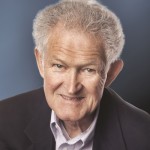
After three decades developing the technique and the instrument, the atomic force microscopy has now several new modes to use it, new spin-off instruments and new fields of application (including the Life Sciences).
More information on the AFM and its inventors is available in the Kavli Prize website: http://www.kavliprize.org/prizes-and-laureates/prizes/2016-kavli-prize-nanoscience
[Paper: Mean-field and linear regime approach to magnetic hyperthermia of core-shell nanoparticles: can tiny nanostructures fight cancer? Marcus S. Carrião, Andris F. Bakuzis. Nanoscale, 2016,8, 8363-8377. DOI: 10.1039/C5NR09093H]

Hyperthermia, for cancer treatment, is induced by increasing the temperature to activate tumor cell death. This high temperature can be created by introducing nanoparticles into the tumor that function as heaters, and after their function is completed they are eliminated by the body. Magnetic nanoparticles may be used in these treatments because they have the ability to generate heat when subjected to alternating magnetic fields of specific intensity and frequency.
A work on nanomedicine (nanotechnology used in medicine) fully conducted at the Brazilian Federal University of Goiás (UFG) suggests a new strategy using hyperthermia for cancer treatment: using smaller magnetic nanoparticles than those normally used and composed of more than one material, which could provide several advantages to the patient. To reach this conclusion, the researchers developed an innovative theoretical method that paves the way for manufacturing magnetic nanoparticles optimized for hyperthermia. The study was reported in a paper published in the prestigious Nanoscale journal, signed by the doctoral student Marcus Carrião dos Santos and his supervisor Andris Figueiroa Bakuzis, professor at the Physics Institute of UFG.
Hyperthermia cancer treatment generally uses nanoparticles that are relatively large (20 nm size range) and homogeneous (from a single material), which are considered as the most effective to generate heat according to theoretical studies based on traditional methods. However, these “large” nanoparticles accumulate quickly in the liver and it may take several months or years for these particles to leave the body of the patient being treated. On the other hand, nanoparticles smaller than 10 nm are rapidly eliminated in the urine, reducing the possibilities of intoxication and thereby increasing the selection of materials that can be used to manufacture them.
The relationship between particle size and excretion route (liver or kidney) was a conclusion reached by Bakuzis and colleagues from evidence reported in the scientific literature and pre-clinical studies (in vivo) carried out within a multidisciplinary research network, coordinated by Bakuzis, and aimed at solving problems associated with the use of magnetic nanoparticles for cancer treatment.
In addition, smaller nanoparticles have better distribution and penetration in tumors, among other advantages in the context of cancer treatment.
Aware of these characteristics, Bakuzis and dos Santos investigated the possibility of manufacturing nanoparticles of less than 10 nm that could efficiently generate heat. An important insight came from an article published in 2011 in the Nature Nanotechnology journal (Nat. Nanotech. 6, 418 (2011)). Professor Bakuzis says that “in this article, the researchers concluded experimentally that certain heterogeneous (from different materials) core-shell structures of spinel ferrites warmed more efficiently than homogeneous particles”.
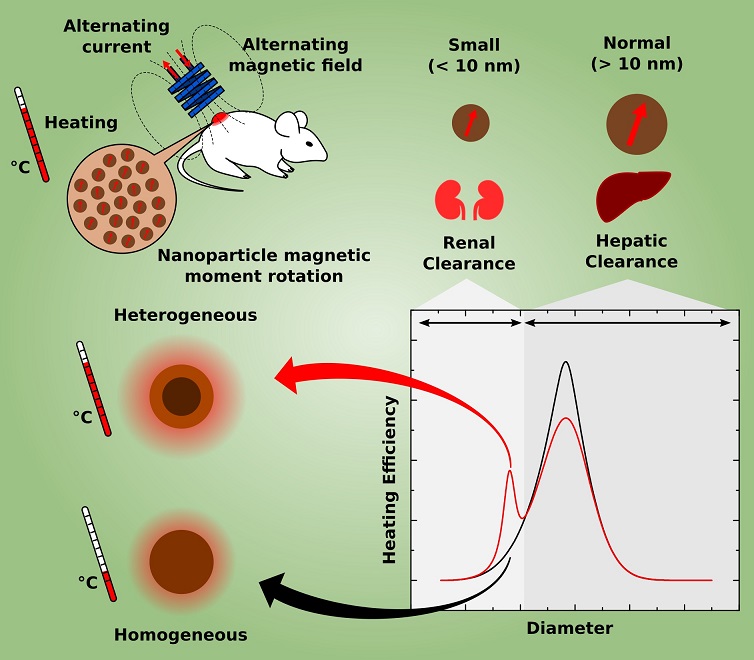
The pair of scientists then decided to theoretically investigate whether nanoparticles less than 10 nm formed by one material core and a shell of another material could efficiently generate heat and how to optimize them for this function. However, the conventional methods available for this modeling were not adequate. In fact, they considered the nanoparticle as a homogeneous entity, ignoring the fact that the surface atoms and the core atoms respond differently to the application of a magnetic field. This oversight became more significant in the study of particularly heterogeneous particles such as those they intended to study, the reason why the researchers from Goiás decided to develop a more suitable model for the study object. Bakuzis explains that “in the paper we presented the first analytical hyperthermia model of core-shell nanoparticles within the linear response and mean-field theory, and from these calculations we pointed out important materials properties to achieve efficient heat generation.”
The results obtained by the physicists and published in the paper may have a significant impact in a health issue that concerns humanity, cancer cure. “Our studies indicate that it is possible to develop small particles for cancer treatment that can be quickly eliminated from the body via the kidneys. In particular, by combining different materials in the nanostructure”, summarizes Bakuzis.
To work with impact on this interface theme, Bakuzis is always in contact with a pool of knowledge of various areas. In addition to leading the multidisciplinary nanomedicine network that includes researchers with backgrounds in tumor biology, genetics, physiology, pharmacy, veterinary medicine, biophysics, physics, medical physics and chemistry, the professor and his group actively participate in scientific events that bring together many different professionals, including doctors with various specializations already using hyperthermia in humans for cancer treatment. “These scientific contacts are fundamental in interface areas such as the one our group works with,” concludes Bakuzis.
The research that led to the paper in the Nanoscale journal received funding from the Brazilian National Scientific and Technological Development Council (CNPq) and from the Research Foundation of the State of Goiás (FAPEG) and was carried out as part of the doctoral work of Marcus Carrião dos Santos.
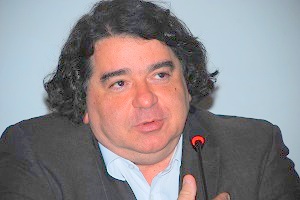
Professor Fernando Lázaro Freire Junior, a participatory member of SBPMat since its creation, took over as director of the Physics Department at the Pontifical Catholic University of Rio de Janeiro (PUC-Rio) in an inauguration ceremony held on May 31 of this year.
With an undergraduate degree, a master’s and doctorate in Physics from PUC-Rio, Freire Junior began teaching at that university in 1979. In 1985, he became an assistant professor and, in 2012, a full professor. From 2003 to 2008 he was director of the Physics Department of the university, a post he occupies again this year. Between 2011 and 2015, he served as director of the Brazilian Center for Research in Physics (CBPF).
In SBPMat, Fernando Lázaro Freire Junior was a member of the founding board (2001), scientific director from 2004 to 2005, president for two consecutive terms from 2006 to 2009 and financial director from 2012 to 2013, among other activities.
See the news story about Professor Freire Junior appointed as the director of the Physics Department in the website of PUC-Rio: http://jornaldapuc.vrc.puc-
The Brazilian Materials Research Society (SBPMat) and the Institute of Physics (IOP) have extended the collaboration from previous years. In 2016, authors of contributions presented at the XV Brazil-MRS Meeting will be able to submit manuscripts to peer review evaluation in a longer list of IOP scientific journals, which now includes nine titles.
After undergoing the standard IOP review process, papers accepted for publication will be posted in an online compilation dedicated to SBPMat. Today 13 papers presented at the XIV B-MRS meeting, in 2015, have been published and feature now in this collection. More information on the submissions will be announced soon on the website of the XV Brazil-MRS Meeting and SBPMat newsletter.
List of IOP journals included in 2016:
· 2D Materials
· Biomedical Materials
· Biomedical Physics and Engineering Express
· Journals of Physics: Condensed Matter
· Journals of Physics D: Applied Physics
· Materials Research Express
· Nanotechnology
· Semiconductor Science and Technology
· Modelling and Simulation in Materials Science and Engineering
|
|||||||||||||||||||||||||||||||||
[Paper: Defect-Free Carbon Nanotube Coils. Nitzan Shadmi, Anna Kremen, Yiftach Frenkel, Zachary J. Lapin, Leonardo D. Machado, Sergio B. Legoas, Ora Bitton, Katya Rechav, Ronit Popovitz-Biro, Douglas S. Galvão, Ado Jorio, Lukas Novotny, Beena Kalisky, and Ernesto Joselevich. Nano Lett., 2016, 16 (4), pp 2152–2158. DOI: 10.1021/acs.nanolett.5b03417]
Nanotubes that coil to the sound of music: tango or chorinho
Among the many applications foreseen for carbon nanotubes, there are some nanoelectronic devices that make use of the excellent ability to conduct electricity, through the tiny graphene tubes. For the good performance of nanotubes in some of these applications, the most suitable are the coil configurations, formed by a single nanotube with its two ends free to make contact with other components within a device. Additionally, to not lose conductivity, the nanotube coil should have relatively low density of structural defects.
In practice however, it is not easy for a human being to achieve 1 nm diameter tubes to twist into spiral loops without generating imperfections and leaving their tips separate from the bundle.
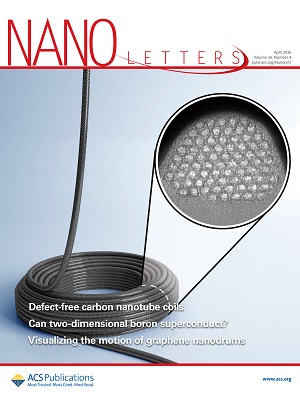
In an article published in the prestigious Nano Letters journal, highlighted in the cover of the April issue of this year, a team of 14 scientists reported the formation of defect-free nanotube coils with free ends, from a spontaneous coiling mechanism of single-wall carbon nanotubes. The study was led by researchers from the Weizmann Institute of Science (Israel) with the participation of four scientists from Brazilian universities (State University of Campinas, Unicamp; Federal University of Minas Gerais, UFMG, and Federal University of Roraima), from ETH Zürich (Switzerland) and from the Bar-Ilan University (Israel).
The team placed iron nanoparticles on silicon dioxide substrates and added a carbon-containing gas – a combination known to promote the growth of long single-wall nanotubes, which can reach more than 100 microns in height. The nanotubes grow perpendicular to the substrate like a forest of trees.
Under these conditions, the scientists created several carbon nanotubes samples, and some were spontaneously coil shaped. The authors analyzed the nanotube coils using SEM, TEM and AFM, obtaining information such as diameter, height and number of coil turns. Using the Raman spectroscopy technique, the authors continued investigating the nanotube coils and found a very low concentration of structural defects and also found that the diameter and chirality of the nanotubes were the same throughout the coil. The Raman spectroscopy analyses were partially carried out at the UFMG by Brazilian Professor Ado Jorio.
To understand the coil formation mechanism, the team used atomistic molecular dynamics simulations, used to depict the physical movements of atoms and molecules. These simulations were headed by Professor Douglas Soares Galvão (Institute of Physics Gleb Wataghin – Unicamp) and carried out by the postdoctoral researcher Leonardo Dantas Machado, former student of Galvão, and by Professor Sergio Benites Legoas (Federal University of Roraima), ex-postdoctoral grant holder in Galvão’s group. At IFGW – Unicamp, Prof. Galvão heads a research group specialized in simulation and computer modeling of nanostructured materials, particularly involving nanowires and nanotubes, and often collaborating with experimental groups from different countries. Through the simulations, the group is able to study, understand and predict phenomena that are sometimes not directly viewed or accessed experimentally in the time scale in which they occur.
Generally speaking, the simulations showed that after growing vertically, the nanotubes that had formed coils began to deposit on the substrate from the bottom up, forming the first turn as a result of their interaction with the carbon gas flow and with the substrate. After this first step, the nanotubes continued to spontaneously and steadily be deposited in a coil-like shape, completing up to 74 turns.
The team also investigated the performance of the coils as inductors (coiled devices that generate magnetic fields when an electrical current passes through, also known as electromagnetic coils) – a nanotube application that had not been studied until now. In the Nano Letters article the nanotube coils showed that despite being highly conductive, they are not yet ready to be used as efficient inductors. However, in the article the analysis of its electrical and magnetic behavior presented new and valuable information which can be used to develop inductive devices from nanotubes.
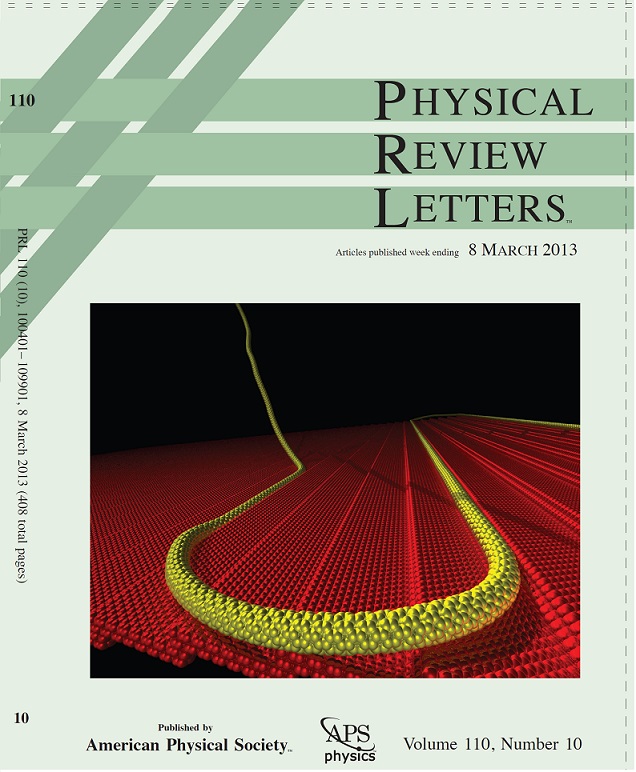
According to Professor Galvão, the paper published in Nano Letters is a continuation of a previous project on carbon nanotube serpentines that involved his group, the group of Israel, led by Ernesto Joselevich, and Professor Ado Jorio (UFMG). This first study also produced an article featured on the cover of a prestigious journal, the Physical Review Letters (Dynamics of the Formation of Carbon Nanotube Serpentines, L. D. Machado, S. B. Legoas, J. S. Soares, N. Shadmi, A. Jorio, E. Joselevich, and D. S. Galvão, Phys. Rev. Lett. 110, 105502 – Published 8 March 2013).
Galvão recounts that the collaboration between the Brazilians and the Israel group began at a conference in Spain, where he attended a presentation by Joselevich on serpentine-shaped carbon nanotubes. “I believed it was a very interesting problem”, says Galvão. Coincidentally, the two scientists met again in a Brazilian event of condensed matter physics and had lunch together with Ado Jorio. That is when their collaboration began. “From the point of view of simulation, it was a very challenging and difficult project (in addition to specifically developing new protocols for the problem, the simulations involve millions of atoms), but Leonardo and Legoas were able to solve this”, says Galvão.
In addition to being consistent from the scientific point of view, the simulations were interesting from an aesthetic point of view. In this regard, Professor Galvão shares an anecdote. “Joselevich, who is Argentine by birth, knows Brazil and the Brazilian culture quite well. The first time he saw the serpentine simulations, he remembered the melody of “Brasileirinho” (a famous piece of chorinho music). We prepared some video versions incorporating the Brasileirinho as the soundtrack in his honor, jesting with the Brazil-Argentina rivalry, and others with tangos. The Brasileirinho wins, of course”, says the professor jokingly.
Two videos of nanotube dancing and forming coils can be accessed free of charge in the supporting info published with the paper in Nano Letters: http://pubs.acs.org/doi/abs/10.1021/acs.nanolett.5b03417
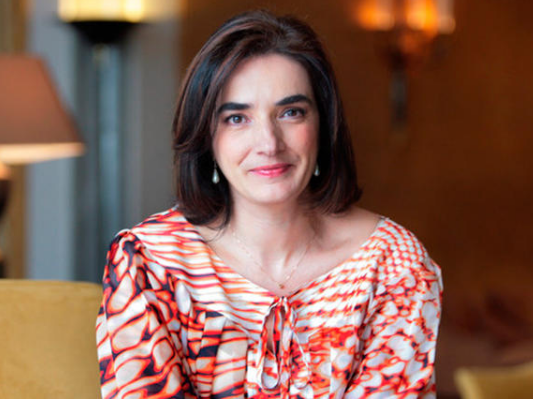
July 2008 was perhaps one of the most rewarding months in the professional career of the Portuguese scientist Elvira Fortunato, and also one of the busiest in media interviews. In fact, it was in July she learned she had won the competition of the European Research Council (ERC), winning EUR 2.25 million, the “Advanced Grant”, to conduct a project on transparent electronics. Titled “Invisible”, the project proposed the development of transparent transistors manufactured using metal oxides as semiconductor components, instead of the traditional silicon semiconductors. In addition to being transparent, these materials have an economic and ecological advantage, and improve the transistors performance.
July 2008 was also the month of extensive divulgation on the internet of a worldwide innovation developed under Elvira Fortunato’s leadership in the laboratory of Materials Research Center (CENIMAT), at the New University of Lisbon, located on the Caparica campus: the paper transistor. Fortunato and her team inserted the conductor and semiconductor components of the transistor on both sides of plain paper sheets (vegetable cellulose), using simple environmentally friendly manufacturing processes and carried out at ambient temperature. In addition to using paper as support, the Portuguese team broke new ground by giving this material an active role: to act as insulating component of the transistor. Different from traditional silicon based transistors, the paper based transistor of the Portuguese team is flexible, recyclable, made from renewable material and much cheaper. These features open up numerous application possibilities of “paper electronics” (a concept coined by Fortunato and registered by Paper-e®), from biosensors to smart packaging.
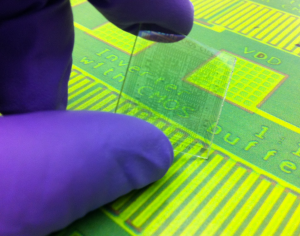
Elvira Fortunato’s attraction to science began in her childhood when she saw an onion cell under an optical microscope. Her passion for scientific research occurred in 1987 when Elvira, in her last year of the Engineering Physics and Materials course at the New University of Lisbon (UNL), had the opportunity to be part of the team at a microelectronic laboratory. Continuing her scientific training at UNL, Fortunato carried out research on amorphous silicon and obtained her master’s degree in semiconductor materials (1991) and a PhD in Materials Science specializing in microelectronics and optoelectronics (1995). In 1991 she began her teaching career at UNL. In 1998 she took over the directory of CENIMAT, a position she holds to this day. In 2012, she became Full Professor of the Department of Materials Science, Faculty of Science and Technology of the University. Since the end of 2015, together with six other European scientists from different fields, she is part of the first group of scientific advisors dedicated to strengthening the EU policies for scientific issues, the High Level Group of Scientific Advice Mechanism.
In nearly three decades of research, the materials scientist, whose H index is 54 according to Google Scholar, has about 500 published articles and more than 50 patents filed. Her scientific production includes more than 14,000 citations.
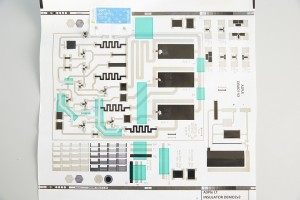
Elvira Fortunato has received dozens of awards from various entities; among them the “Grand Officer” of the Order of Infante D. Henrique, awarded by the President of the Republic of Portugal (2010). As for this year, the scientist has been honored with two major awards. Together with her husband, the scientist Rodrigo Martins, they are among the finalists for the European Inventor Award 2016, the European Patent Office, for the invention of the paper transistor. Moreover, the researcher was awarded by the European Academy of Sciences (EURASC) with the Blaise Pascal Medal for Materials Science 2016, which also makes her a fellow of this academy.
At the end of September, Elvira Fortunato will be in Brazil, in the city of Campinas (SP), giving a plenary lecture at the XV Brazil-MRS Meeting. The theme will be “green electronics”, a concept that covers the development of components and devices via environmentally friendly manufacturing processes, using materials such as cellulose produced by bacteria in addition to metal oxides, plain paper and nanostructured paper. Through a process of ingenuity, the speaker will show some of the many potential applications of these green devices.
Here is a brief interview with the Portuguese scientist.
SBPMat Newsletter: – In your opinion, what are the main research results of the work undertaken by you and your group in the field of invisible electronics and paper electronics? Are there any products or prototypes in the market? Any patents licensed? Are there advances in the manufacturing techniques? Could you to share with our readers references of articles or patents?
Elvira Fortunato: – In the area of transparent electronics the most immediate applications are in the area of flat-panel displays. The new generation of displays will switch to OLED technology over LCD and thin film transistors made of metal oxides have better performance to those used, the reason why they will replace the current amorphous silicon-based ones. There are prototypes in the market now, especially in the leading companies in this area, such as Samsung and LG.
In the electronic paper area, a more disruptive area, there are no products on the market as of now, but we believe that within the short/medium term it will be quite visible in the area of smart packaging and the internet of things. In terms of packaging, there are some prototypes, especially in the Nordic countries, such as in packaging for medicines.
We have several patents, and others in partnership with companies, in the field of electronic paper and transparent electronics.
You can get more information on transparent electronics and electronic paper:
SBPMat Newsletter: – In your opinion, what are the next steps or challenges to reach a widespread green electronics?
Elvira Fortunato: – Scientific research associated with recent technological developments are increasingly moving toward a strong awareness of the environment and of the adverse effects of which we are now the victims, and which concerns the scientific community. I also believe that in this area the recent cop21 conference in Paris made great strides, in particular the “Paris Agreement”, a historic commitment signed by 195 countries for the Sustainable Development in 2030.
SBPMat Newsletter: – Please leave an invitation or message about your plenary speech to the readers who will participate in the XV Brazil-MRS Meeting.
Elvira Fortunato: – If you are interested in seeing how you can make dreams come true, come see the lecture “Green electronics: a technology for a sustainable future”.
——————
Link to the abstract of Elvira Fortunato´s plenary talk: http://sbpmat.org.br/15encontro/speakers/abstracts/4.pdf